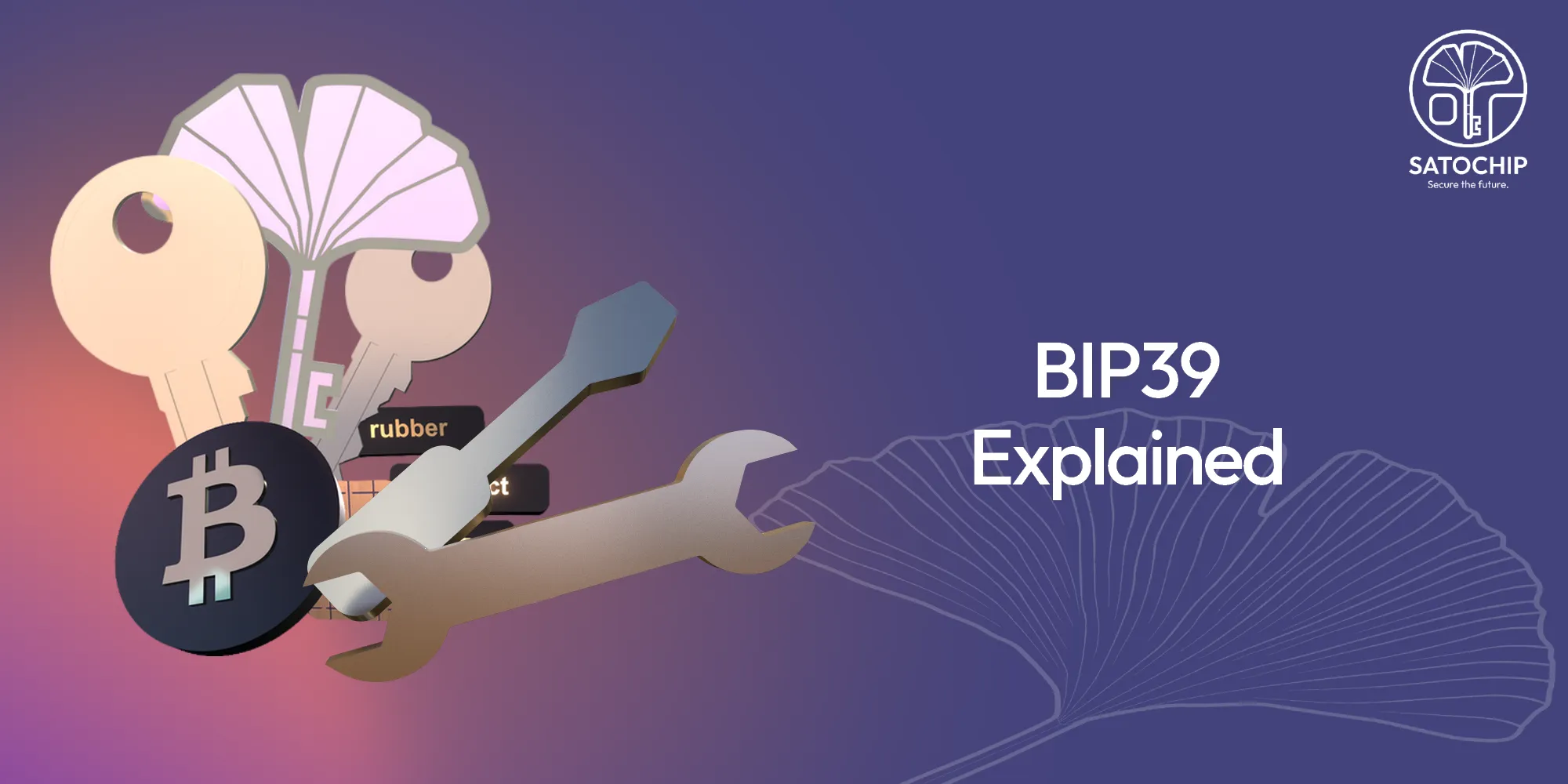What is the BIP39?

Bitcoin Improvement Proposal #39 – BIP39
Introduction
If you’ve already read our article on the Bitcoin Improvment Protocol 32 (or BIP 32)🔗, you’ll already know that, since this update, it’s possible to generate multiple addresses with a single wallet and restore them all at once.
The only slight difficulty is that, until the introduction of BIP39, restoring the wallet was complex, since the private key is a (very) long sequence of characters that a human cannot easily learn by heart. The risk of mistaking one character for another is also higher than with the use of more common words.
But, thanks to the BIP39 update, this problem is now a thing of the past.
BIP39 contributors and history
The BIP39 update was released in September 2013 and is the result of a proposal made by Marek Palatinus, Pavol Rusnak, Aaron Voisine, Sean Bowe.
For the record, Marek Palatinus is known as “Slush”, the creator of the very first Bitcoin mining pool called “Slush Pool”. Now rebranded as “Braiins pool“, this pool has mined more than 1M BTC since 2010.
And Pavol Rusnak is better known as “Stick”, with “Slush”, he is the co-founder of Trezor, one of the most iconic hardware wallet on the market.
What’s new with the BIP39?
The BIP39 update brought the implementation of seedphrases 🔗, which are composed of 12 or 24 words and enable easy restoration of a bitcoin wallet. It’s much easier to remember, or save, a string of words than a string of completely random alphanumeric characters.
What are the main differences between a 12 words seedphrase and another one composed by 24 words ?
The entropy used to generates the seed can be a 128 or a 256 bit random number.
If the wallet you use is using a 128 bits entropy, your seedphrase will be 12 words long. If the entropy is 256 bits, then your seedphrase will be 24 words long.
You may reaad on the Internet that 24 words seedphrases are more secure than 12 words one, and that’s kinda makes sens. But in fact, using a 24 words seedphrase is completely optional and there is no specific reason to use a passphrase longer than 12 words if there is no pattern during the generation of the seedphrase.
If you’re not sure that your seed is properly generate, you may want to add an extra level of security by using a passphrase. If you do not know what a passphrase is, check our article 🔗about it !
A 2048-word list
Seedphrasing is an essential concept to master if you want to start conserving your own funds. Once again, there is a specific article 🔗about what is a seedphrase in our academy, do not hesitate to check it out if you want to be certain that you have a good understanding of this concept. Especially is you have some doubts about how to safely backup your wallet.
How is a seedphrase composed? We said earlier that a mnemonic phrase can be made up of 12 or 24 words. But are these words sorted in any way?
As it happens, yes. In the English language, only 2048 words in the dictionary meet the criteria of the BIP39 update and can therefore be used in a mnemonic phrase. These words share similar characteristics. Thus, each of the 2048 words begins with a unique sequence of 4 letters.
Words that look similar, such as “woman” and “women”, are excluded from the list to reduce the risk of error and make it easier to save the seedphrase. You can find all the features governing this word sequence on this Github link 🔗.
Not only for Bitcoin
The BIP39 update has been a major step forward for the Bitcoin protocol. Since the update, it is way more easier to backup a bitcoin wallet. In fact, this update is so great that every blockchain decided to use the same concept.
That’s why your Ethereum wallet, or any other EVM blockchains also use seedphrases.
Knowing that, you can use a single seedphrase (and optionally its passphrase) to get acces to a Bitcoin wallet but also your Ethereum wallet or any other L2 like Polygon, Arbitrum or even some altcoins projects like Doge, Litecoin etc…
Your Satochip hardware wallet 🔗is fully compatible with BIP39. Using a single card gives you access to a large number of blockchains and tokens. Simply initialize it with a 12- or 24-word seedphrase, and you’ll be up and running in a minute.
We hope that this article was helpful and do not forget to check all of the other Academy’s articles 🔗!


